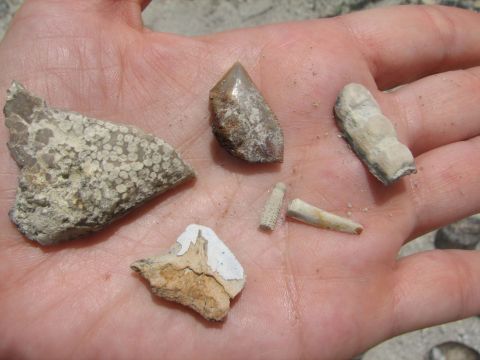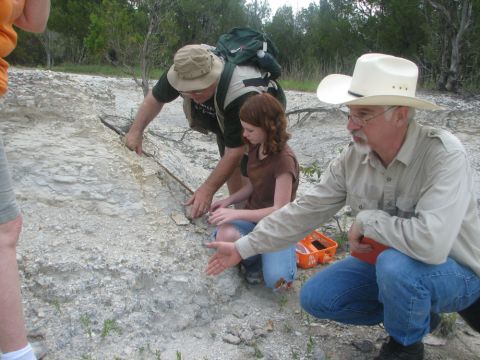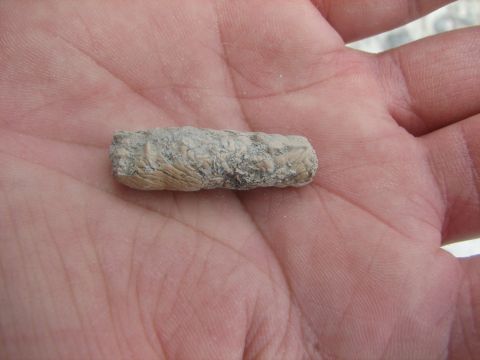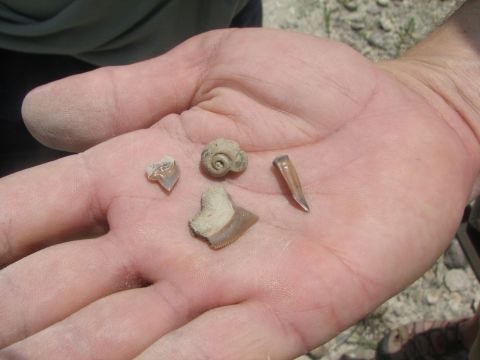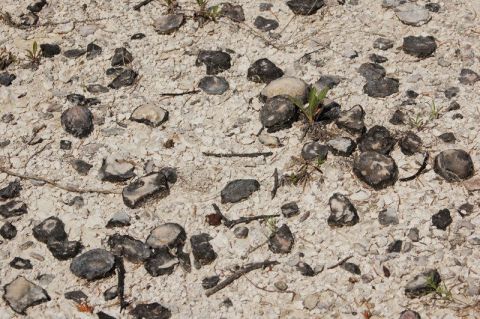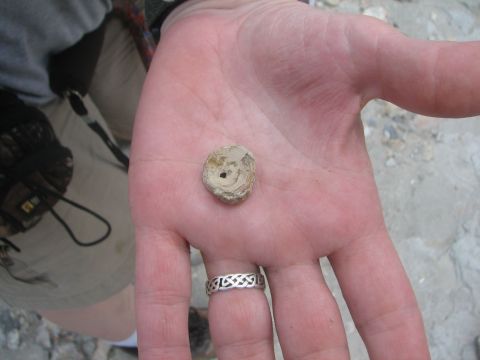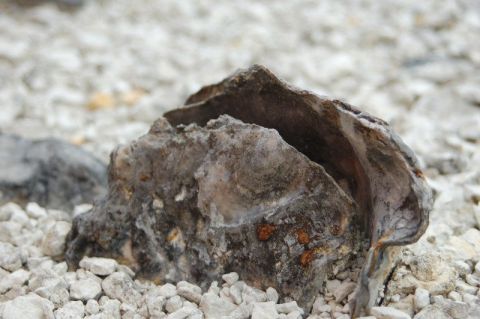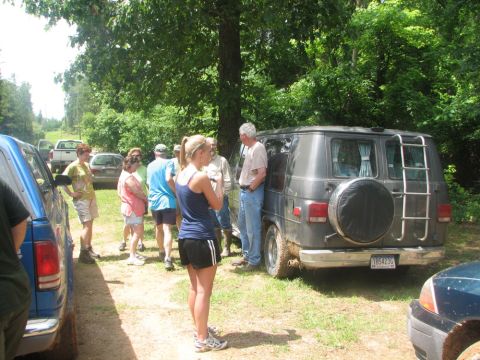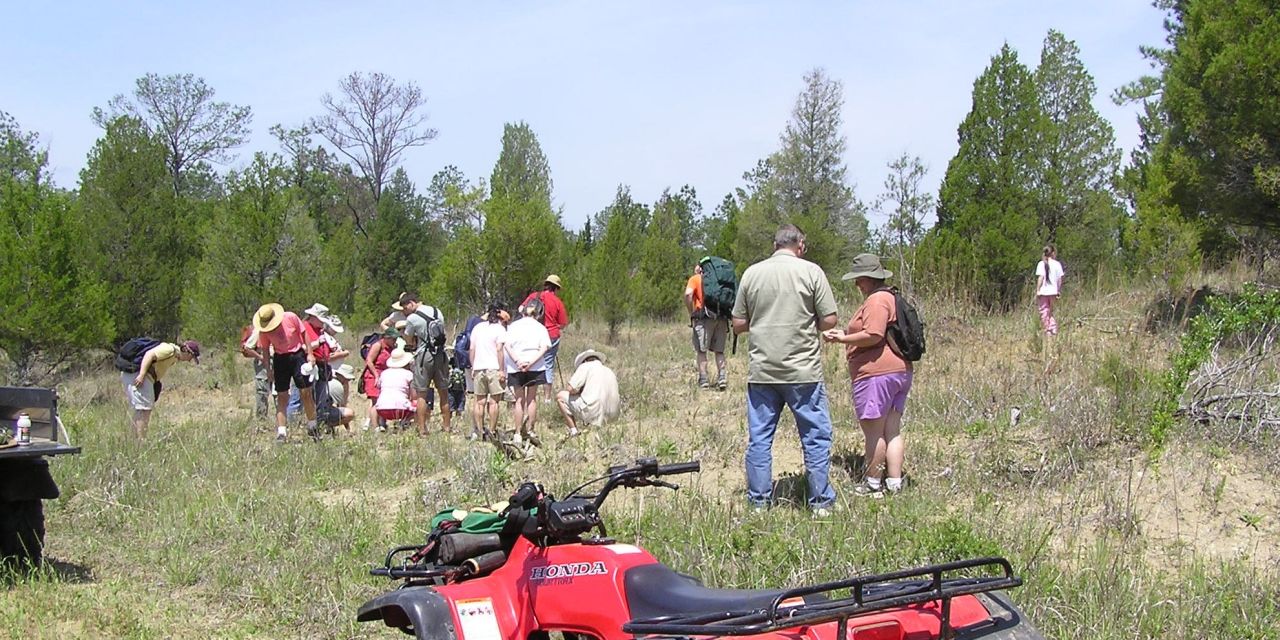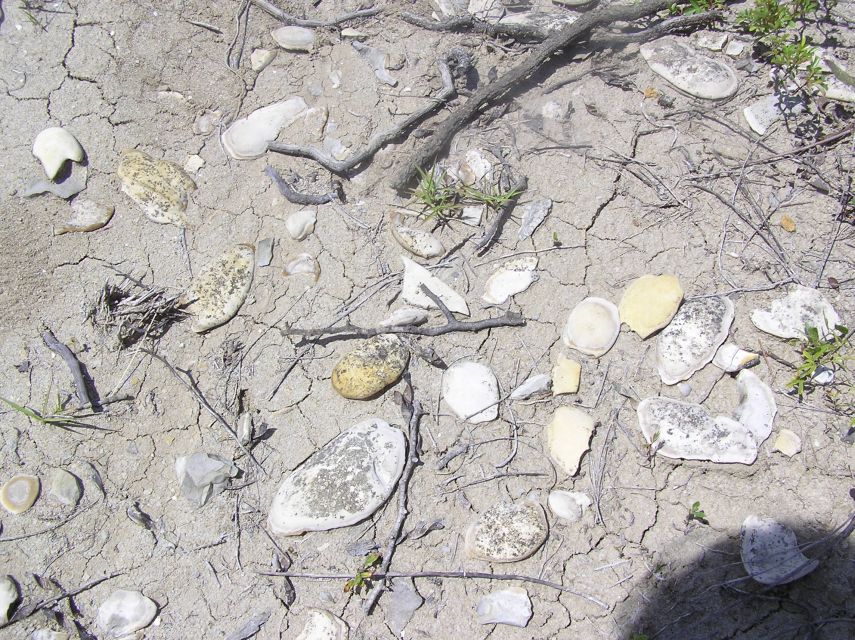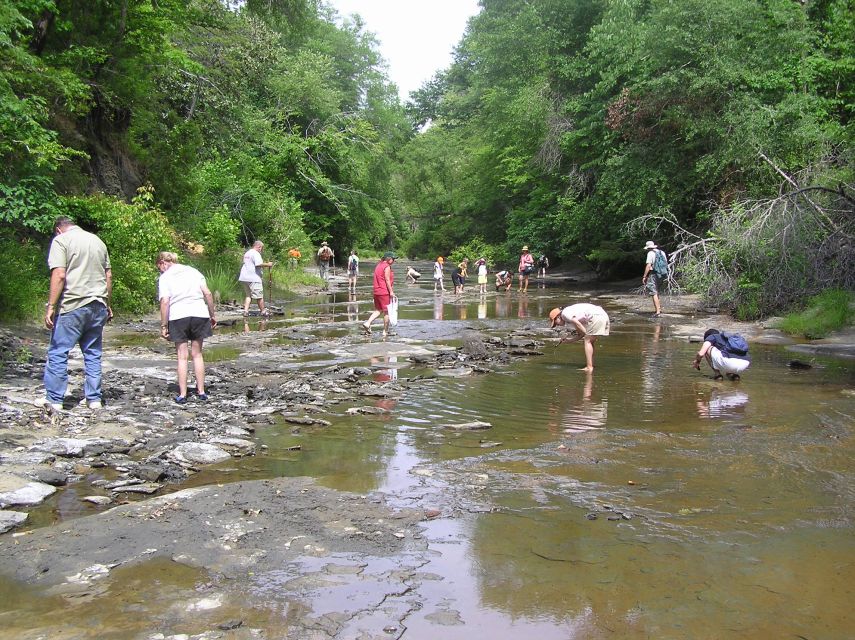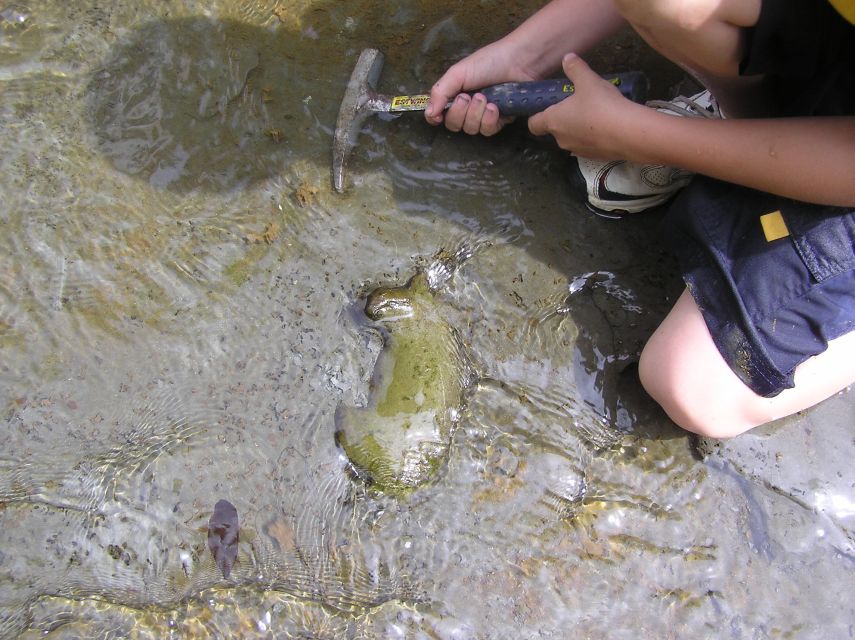May 16, 2009 - Cretaceous Fossils, Sumter County, AL
Old hands as well as new joined up early on Saturday morning for a trip to some great Cretaceous gully sites in West Alabama. Dr. John Hall and Dr. Andy Rindsberg, both from the University of West Alabama, led us down chalk roads (more later on the chalk roads!) and through the woods to the bottom of the ancient ocean. The landscape looked like the remains of an ancient clam-bake! Literally MILLIONS of fossilized shells including exogyra, various clams, shark and sawfish teeth, crab claws, oyster shells, echinoid spines, and at least one small shark vertebra. One of our teen-aged guests, Megan, discovered a large Rudist clam. This was only her second trip with BPS and her find was sufficiently rare from this location that Dr. Hall claimed it for the nascent Black Belt Museum in Livingston. Her name will remain with it and she will get a letter of recognition.
Many who drove up from Birmingham were watching the weather, and at least one member called to see if the trip had been cancelled. Cancelled??? Hey, this is BPS, guys! But later in the day rumbling could be heard and the clouds looked angry. The landowner sent word that the rain was about an hour away, so we started moseying back to the cars. Oops, not fast enough, we were drenched by the time we made it back to the field. So. How many people remember James Lamb telling us over and over - GET OUT OF THE GULLIES BEFORE IT STARTS RAINING??? Let's see. . . chalk . . clay . . water . . slick . . stuck in mud. Yeah, right. At least 3 vehicles had to be pushed out, um, slid out, perhaps? Needless to say, we were all pumped up with adrenaline by the time we made it back up the long winding road to the top of the hill! An exciting trip we will be discussing for years to come!
Edited by Vicki Lais
Pictures courtesy Nancy Lea, Larry Herr, Vicki Lais
Couple of badly worn shark teeth, fish tooth (enchodus?), echinoid spine and small part of crab leg.
Joshua has found an exogyra with both halves. It's easy finding just bottoms, or just tops, but matching pieces are much more difficult.
Megan is showing Drs. Rindsberg and Hall where the rudist was found. After careful searching, several more pieces were found.
View towards the far end of the first gully where most of the shark teeth and sawfish teeth were found. Where is everyone? They all scattered to the many gullies in the area, and so most did not get photos taken.
Well, we didn't make it out of the site fast enough. The white chalk is like ice when it gets wet, so slick you can barely stand on it. These guys were slipping and sliding trying to push this car up a slight incline. We put branches and limbs under it to get traction.
Small impression of an Inoceramus. These are normally quite large, flat shells, 2-3 foot across, and usually broken into millions of fragments.
As many people know, BPS got its beginning with the Red Mountain Museum in 1984, where Gorden Bell, James Lamb and Scott Brande trained their first group of amateurs on how to assist professional paleontologists in the field. Larry joined us at the meeting location, modeling an ancient Leaping Lizards T-shirt from the old Red Mountain Museum. Unfortunately, he had to leave early and missed all the fun.
A collection of teeth, including shark and enchodus, along with an internal mold of a gastropod.
What remains of a large inoceramus. Typically in gullies, the fragmented shell is scattered over a 2-4 foot area, They frequently grow 3-4 feet across.
Here's the whole gang, ready for a day of collecting. We have to drive quite a ways through the woods.
What's that? Rumbling in the distance, and word was sent that the rain was about an hour away. So we headed back to the cars.
Exogyra sitting on pedestals created by rain washing away the underlying and surrounding chalk.
We've arrived at the field next to the gullies, where Dr. John Hall gives us an overview of the ecology and geology of the area. This area is being transformed into prairie with careful culling and burning. He also explains collecting techniques to follow so fragile fossils aren't damaged.
Megan has found a large section of Rudistid clam. This type clam is unusual at this location, and will be taken back to the University of West Alabama for study.
When we finally got back to the top of the hill, the landowners son helped wash off the thick clods of mud that were practically filling our wheelwells. Here we are waiting in line for our turn with the hose.

